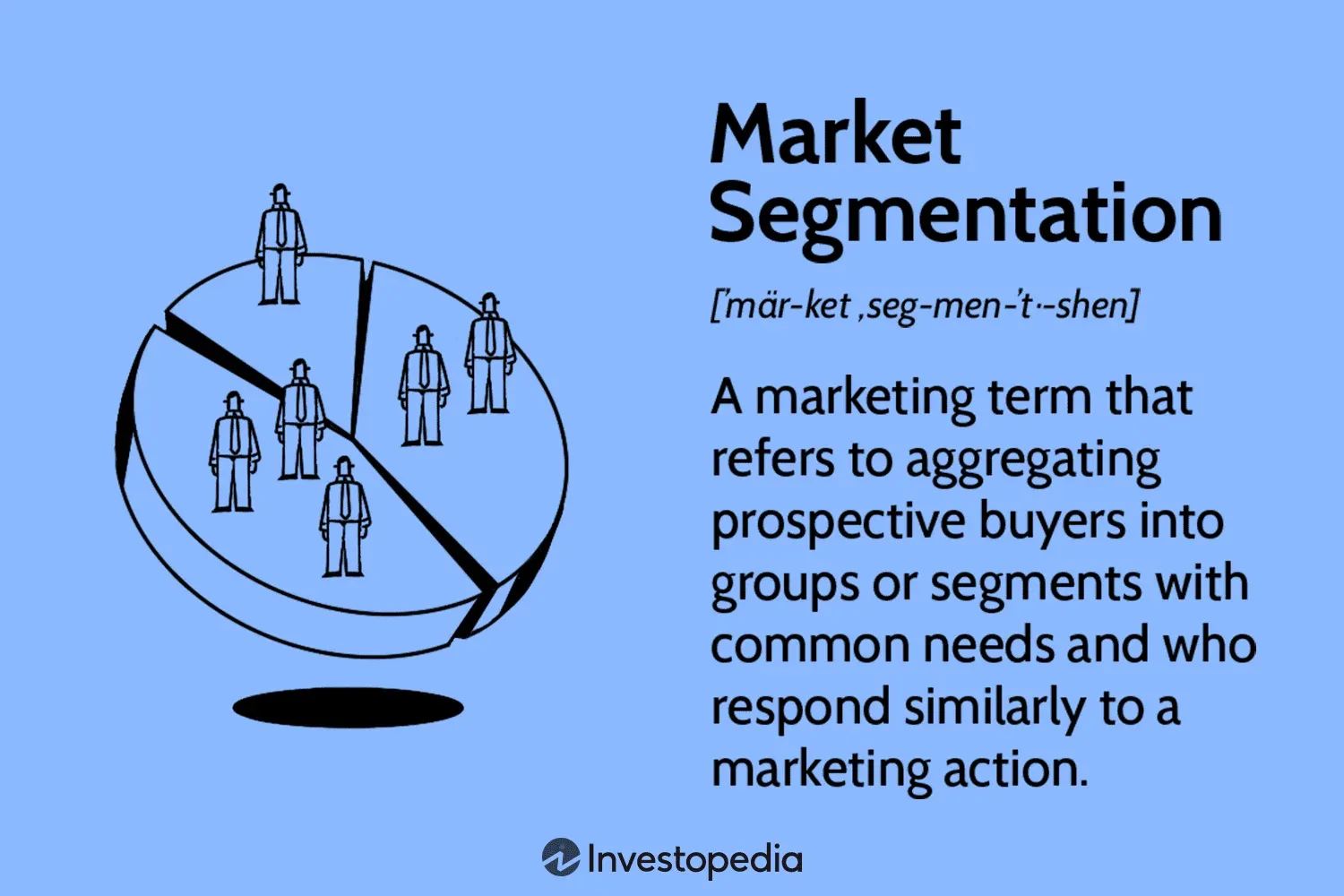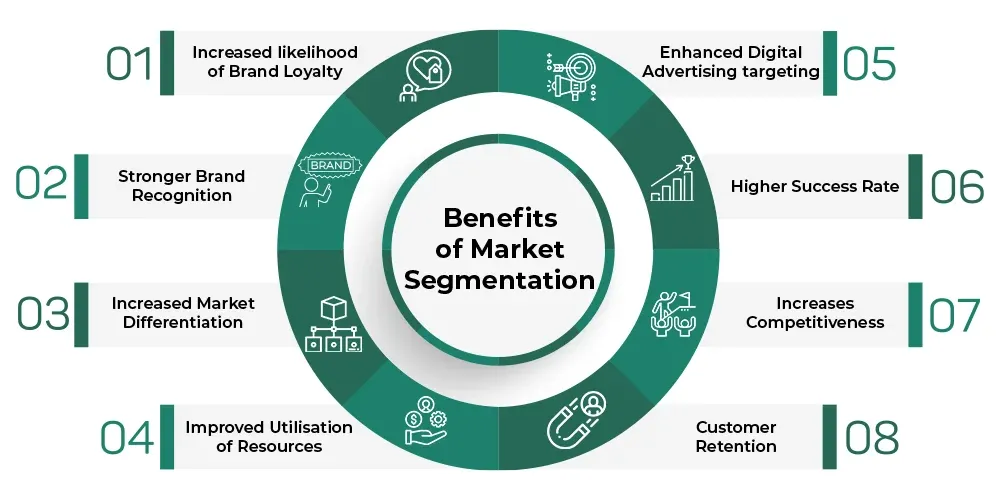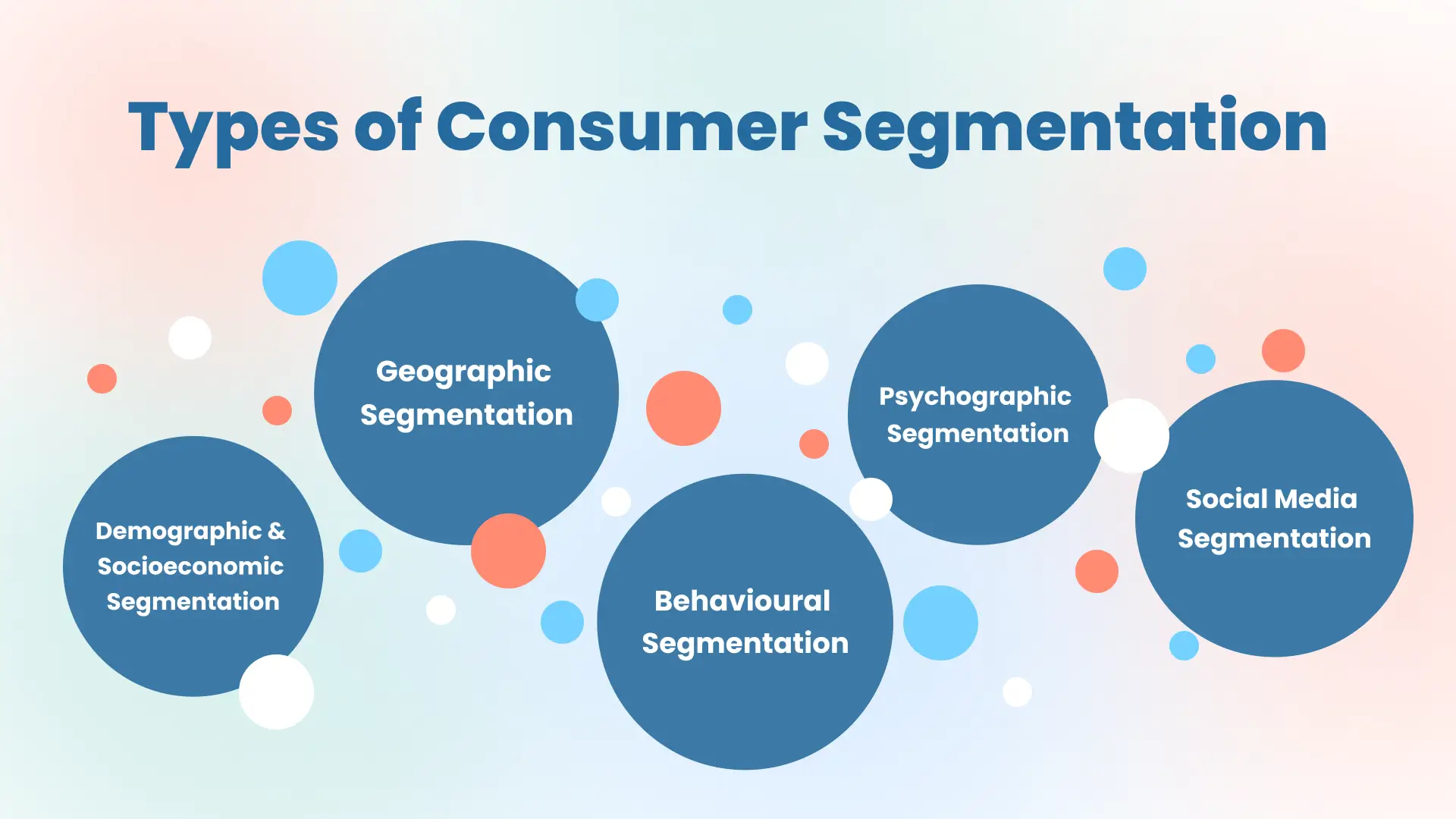Effectively segmenting customers allows marketers to allocate budgets more efficiently, target messaging, and better meet customers’ needs (Forbes, 2022). Recent surveys of marketers validate this, with 79% agreeing that customer segmentation is highly important in enhancing the effectiveness of marketing strategies (TrustRadius, 2021). The global customer segmentation software market also reflects this prioritization, projected to grow from $3.25 billion in 2021 to $7.25 billion in 2026 (Mordor Intelligence, 2022).
With the average business having access to over 487 kinds of customer data (Genesys, 2022), leveraging analytics and AI to derive actionable segments is increasingly relevant. Specifically, behavioral and predictive segmentation powered by machine learning processes vast datasets beyond simplistic demographics.
Not only can this segmentation inform messaging personalization, but it also enables predictive analytics to model customer lifetime value and guide strategic budget allocation (McKinsey, 2022). Getting segmentation right delivers manifold benefits, as industry leaders demonstrate conversion uplifts exceeding 100% and larger average deal sizes from targeted upsells (Twilio, 2022).
The ability to divide customers into subgroups that can be uniquely targeted is mission-critical. When powered by advanced analytics, segmentation not only improves marketing but drives wider commercial success.
What is Customer Segmentation?
Customer segmentation is the process of dividing a target audience into distinct groups based on specific characteristics. It allows businesses to understand the diverse needs, preferences, and behaviors of their customers.
By segmenting customers, marketers can create targeted marketing strategies that effectively reach the right audience. The process involves analyzing data collected from different sources such as demographics, psychographics, geography, and behavior to identify key segments.
These segments can then be used to personalize marketing efforts and cater to the unique needs of each group. Customer segmentation is an essential strategy in today's data-driven marketing landscape.
Benefits of Customer Segmentation

In an increasingly competitive marketplace, brands cannot afford to treat all customers equally. Blanket messaging fails to resonate in an age where consumers expect personalized brand experiences tailored to their preferences and behaviors. This is where customer segmentation provides immense, multifaceted value.
By dividing heterogeneous consumers into definable groups for targeted marketing, brands gain several commercial and operational advantages.
Here are five key benefits well-executed segmentation confers:
Enhanced Personalization & Engagement
Micro-targeting groups with messaging and offers reflecting their needs and interests is hugely impactful. 71% of consumers express frustration when content feels generic, but personalized content can deliver conversion uplifts exceeding 100%.
Optimized Resource Allocation
Concentrating budgets and initiatives around high-lifetime-value segments increases ROI. Identifying at-risk customers also enables preemptive retention programs. Forecast modeling guides budgeting to amplify opportunities.
Streamlined Product Development
Analyzing relative segment attractiveness and needs gives product teams invaluable consumer insights for building must-have features tailored to best-fit groups from the outset.
Channel Optimization
Mapping consumer journeys based on segment purchasing behaviors and channel preferences enables brands to fine-tune channel investments and experiences for seamless omnichannel engagement.
Future-Proofed Strategy
Continuous behavioral analysis spots emerging trends across segments, empowering agile strategy evolution to keep ahead of market shifts. Connecting analytics with real-time campaign performance and market dynamics is invaluable.
While customers vary wildly, those within targeted groups often demonstrate tangible commonalities. Identifying and quantifying these allows brands to eschew guesswork and make data-driven decisions across the customer lifecycle journey.
When leveraged effectively alongside personalization engines, CRMs, and predictive analytics, customer segmentation ascends to be a marketer’s Swiss army knife for multiplying ROI across acquisition, conversion, retention, and satisfaction.
Suggested Reading:
Types of Customer Segmentation

There are several ways to segment a customer base based on various characteristics. Here are the most common types of customer segmentation:
Demographic Segmentation: Age, Gender, Income, Occupation, etc
Demographic segmentation is one of the most popular forms of customer segmentation. It segments customers based on age, gender, income, occupation, education level, and other demographic factors. This type of segmentation is useful for businesses targeting a specific group based on lifestyle choices, behaviors, or income.
Psychographic Segmentation: Personality Traits, Values, Lifestyle
Psychographic segmentation segments customers based on their personality traits, values, interests, and lifestyles. It aims to understand the unique motivations and beliefs of each customer segment. This type of segmentation is useful for businesses trying to create a brand identity that aligns with the values of their target customer segments.
Geographic Segmentation: Location, Climate, Culture
Geographic segmentation segments customers based on their location, climate, and cultural characteristics. This type of segmentation is useful for businesses trying to target customers based on their location and cultural preferences.
Behavioral Segmentation: Purchase History, Usage Patterns, Brand Interactions
Behavioral segmentation segments customers based on their behaviors, such as their purchase history, usage patterns, and interactions with the brand. This type of segmentation is useful for businesses trying to identify customer preferences, needs, and pain points.
But just like any marketing campaign, results depend on the marketing strategies and efforts you give. This sometimes includes doing things your competitors are not doing.
For example, consider making the most out of your CRM by integrating it with an AI chatbot. And what good does it bring to your business?
Take the case of ‘Retargeting’. To implement effective retargeting you need two things: A well-integrated CRM and an effective bulk message sender.
By integrating a CRM with your chatbot you can set up drip campaigns and send bulk messages on platforms that are convenient for your customers.
And beginning with such automation isn't that tough either. Meet BotPenguin- the home of chatbot solutions.
With the combined benefits of CRM and Chatbots, BotPenguin makes automation services like lead generation and customer support more effective by unifying marketing and sales efforts in one place:
- Marketing Automation
- WhatsApp Automation
- Customer Support
- Lead Generation
- Facebook Automation
- Appointment Booking

Data Collection for Customer Segmentation

To segment customers effectively, businesses need to collect accurate and relevant data. Here are some common methods for collecting customer data:
Gathering Demographic Data
Demographic data can be collected through surveys, social media profiles, and customer accounts. The data can be analyzed to determine age, gender, location, income level, education level, occupation, and other demographic factors.
Leveraging Online and Offline Data Sources
Businesses can use online and offline data sources, such as website analytics tools, point-of-sale systems, and customer relationship management (CRM) software to collect customer data. These sources can help identify purchase history, product usage, and customer interactions with the brand.
Utilizing Customer Feedback and Surveys
Surveys and feedback forms can be used to collect data from customers directly. This data can help identify customer preferences, pain points, and areas for improvement.
Implementing Tracking and Analytics Tools
Tools like Google Analytics can be used to track customer behavior online. This data can help identify customer preferences, behavior patterns, and other factors that can be used for segmentation.
In addition to tracking customer behavior via websites and apps using tools like Google Analytics, conversational chatbots provide another powerful channel to gather first-party data around preferences, interests, pain points and more through natural dialogs.
Intelligent bots can ask qualifying questions, provide personalized content recommendations, capture feedback and gain explicit consent for data usage - securing valuable segmentation inputs directly from customers in a friendly interface. Combining behavioral analytics from web/app activity with rich conversational data analyzed using AI equips businesses with 360-degree customer intelligence to drive hyper-personalization.
Suggested Reading:
Process of Customer Segmentation
Customer segmentation is a process of dividing a customer base into groups based on shared characteristics. To segment customers effectively, businesses must follow a structured approach. The process of customer segmentation involves the following steps:
Defining Segmentation Criteria
The first step in the segmentation process is to define the segmentation criteria. This involves identifying the most relevant factors that divide customers into different groups. The criteria could be based on demographics, psychographics, geography, or behaviors. Examples of segmentation criteria may include age, gender, income level, purchase history, or interests.
Segmenting Customers Based on Selected Criteria
Once the segmentation criteria have been defined, customers are grouped into segments based on the criteria. Each segment should be homogeneous, with customers sharing similar characteristics. This will enable businesses to craft tailored marketing strategies for each group.
Analyzing and Profiling Each Segment
Once customers are segmented, businesses should analyze each segment to gain insights into the unique needs and preferences of each segment. A customer profile should be created for each segment, detailing their behavior patterns, preferences, and pain points. This analysis can inform businesses in creating targeted marketing strategies.
Identifying Segment-Specific Marketing Strategies
Using the insights gained from analyzing and profiling the segment, businesses can craft marketing strategies tailored to the unique needs of each segment. This may include developing product offerings that cater to the specific needs of each segment or creating a more personalized customer experience.
Implementing Customer Segmentation
After segment-specific marketing strategies have been identified, businesses should implement these strategies into their marketing campaigns. Here are the key implementation steps:
Integrating Customer Segmentation into Marketing Campaigns
Customer segmentation should be integrated into all marketing campaigns, from email marketing to social media advertising. This ensures that each segment is exposed to messaging that resonates with their specific needs and preferences.
Choosing the Right Marketing Channels for Each Segment
Once customer segments are identified, it is essential to choose the marketing channels that are most effective for each segment. For example, younger segments may be more receptive to social media marketing, while older segments may prefer traditional email marketing.
Creating Tailored Messaging and Content for Each Segment
Messaging and content should be tailored specifically to each segment, addressing their unique needs, desires, and pain points. Personalized messaging can increase engagement and improve the likelihood of conversion.
Measuring and Tracking the Effectiveness of Segmentation Strategies
Finally, businesses should track the effectiveness of their segmentation strategies to assess their impact. This may involve tracking conversion rates, customer satisfaction levels, and other metrics that measure the success of each segment-specific strategy.
Conclusion
Customer segmentation remains a pivotal marketing capability that, when mastered, unlocks wider commercial success and competitive differentiation. As the famous saying goes: “If you try to please everyone, you will please no one.” Segmentation enables marketers to efficiently target the right subgroups and nurture each through personalized messaging and experiences.
With the staggering volume of customer data now accessible, leveraging AI and machine learning driven analytics is mandatory to derive actionable insights. Techniques like predictive behavioral modeling and customer lifetime value estimation spot emerging opportunities and guide budget investments. Industry leaders prove these translate directly into triple-digit conversion uplifts, larger deal sizes, reduced churn, and stronger customer loyalty.
Ultimately, taking a data-driven, customer-centric approach to divide heterogeneous consumers into definable groups for tailored treatment represents an evolutionary step for marketing. Segmentation and the underlying analytics will only grow more vital in meeting rising personalization expectations from customers while achieving cost efficiencies internally.
Those investing now will gain a sustainable competitive advantage and establish bonds with the customers of tomorrow. Now is the time to embed robust, adaptable segmentation into strategic marketing. The commercial dividends promise to be well worth the effort.
Suggested Reading:
Frequently Asked Questions (FAQs)
How does customer segmentation help in marketing?
Customer segmentation enables businesses to target specific customer groups with personalized marketing strategies, leading to improved customer engagement, increased conversion rates, and enhanced overall marketing efficiency.
How is data used in segmentation marketing?
Data analysis helps identify common characteristics and behaviors among customer groups, allowing businesses to create segmented profiles based on demographics, preferences, purchase history, and other relevant data points for more targeted and effective marketing campaigns.
How does big data help market segmentation?
Big data analysis provides a comprehensive view of customer behavior and trends, enabling businesses to identify intricate patterns and develop highly detailed customer segments. This facilitates the creation of more accurate and refined marketing strategies, leading to better customer engagement and increased conversion rates.
How do you use audience segmentation to boost your content marketing efforts?
Utilize audience segmentation to tailor content specifically to the preferences and interests of different customer groups. Customize content formats, topics, and distribution channels to resonate with each segment, leading to increased engagement, improved brand awareness, and higher content relevance for the target audience.
What is the value of customer segmentation?
Customer segmentation adds value by enabling businesses to understand their customers better, personalize marketing efforts, and deliver targeted messages that resonate with specific customer groups. This results in improved customer satisfaction, increased brand loyalty, and enhanced overall marketing efficiency and effectiveness.



